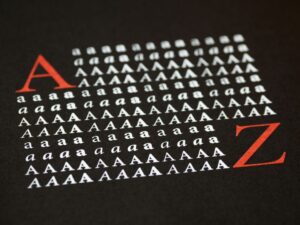The Future of Web Design: Key Trends to Watch
As we move further into the digital age, the landscape of web design continues to evolve at a rapid pace. The future of web design trends is shaped by technological advancements, changing user behaviors, and the need for businesses to stand out in a crowded online marketplace. In this comprehensive article, we will explore the key trends that are set to define the future of web design, providing insights into how these trends can be leveraged to create engaging, user-friendly websites that drive conversions.
The importance of web design cannot be overstated. A well-designed website not only enhances user experience but also plays a crucial role in search engine optimization (SEO), brand perception, and overall business success. As we delve into the future of web design trends, we will highlight the significance of each trend and how it can be integrated into your web development strategy.
1. Minimalism and Simplicity
One of the most prominent trends in web design is the move towards minimalism. As users become increasingly overwhelmed by information overload, websites that embrace simplicity and clarity are gaining traction. Minimalist design focuses on essential elements, eliminating unnecessary clutter, and providing a seamless user experience. This trend emphasizes the use of whitespace, clean typography, and a limited color palette to create visually appealing and easy-to-navigate websites.
2. Dark Mode
Dark mode has emerged as a popular design choice among users, offering a visually striking alternative to traditional light interfaces. This trend not only enhances aesthetics but also reduces eye strain, especially in low-light environments. As more operating systems and applications adopt dark mode, web designers are expected to incorporate this feature into their designs, providing users with the option to switch between light and dark themes.
3. Responsive and Adaptive Design
With the increasing use of mobile devices for browsing, responsive and adaptive design has become a necessity. Websites must be optimized for various screen sizes and resolutions to ensure a consistent user experience across devices. The future of web design trends will see a greater emphasis on fluid grids, flexible images, and media queries that allow websites to adapt seamlessly to different environments.
4. Voice User Interface (VUI)
As voice-activated devices become more prevalent, the integration of voice user interfaces (VUI) into web design is on the rise. VUI allows users to interact with websites using voice commands, making navigation more intuitive and accessible. This trend is particularly beneficial for individuals with disabilities, as it enhances usability and inclusivity. Web designers will need to consider how to implement VUI effectively, ensuring that voice interactions complement traditional navigation methods.
5. Artificial Intelligence and Chatbots
Artificial intelligence (AI) is revolutionizing the way we interact with websites. Chatbots, powered by AI, are becoming increasingly common, providing users with instant support and information. The future of web design trends will see a rise in the use of chatbots to enhance customer service, streamline user interactions, and gather valuable data on user preferences. Designers will need to create interfaces that seamlessly integrate chatbots, ensuring they enhance rather than detract from the overall user experience.
6. Microinteractions
Microinteractions are subtle animations or design elements that provide feedback to users during their interactions with a website. These small, engaging details can significantly enhance user experience by making interactions feel more dynamic and responsive. The future of web design trends will see an increase in the use of microinteractions to guide users, celebrate achievements, and provide contextual information, ultimately leading to a more engaging browsing experience.
7. Augmented Reality (AR) and Virtual Reality (VR)
As technology advances, the integration of augmented reality (AR) and virtual reality (VR) into web design is becoming more feasible. These immersive technologies allow users to interact with products and services in a virtual environment, enhancing the online shopping experience. The future of web design trends will likely see an increase in AR and VR applications, particularly in e-commerce, where users can visualize products in their own space before making a purchase.
8. Sustainable Web Design
With growing awareness of environmental issues, sustainable web design is emerging as a key trend. This approach focuses on creating websites that are energy-efficient and environmentally friendly. Designers are encouraged to optimize images, reduce server load, and choose sustainable hosting options to minimize the carbon footprint of their websites. The future of web design trends will prioritize sustainability, appealing to eco-conscious consumers and businesses alike.
9. Advanced Typography
Typography plays a crucial role in web design, influencing readability and user engagement. The future of web design trends will see a shift towards more creative and diverse typography, with designers experimenting with custom fonts, variable fonts, and dynamic text. This trend allows for greater expression of brand identity and enhances the overall aesthetic of websites, making them more visually appealing and engaging.
10. Data-Driven Design
As data analytics become more sophisticated, web designers are increasingly relying on data-driven design principles. By analyzing user behavior and preferences, designers can create more personalized and effective web experiences. The future of web design trends will emphasize the importance of user data in informing design decisions, leading to websites that are tailored to meet the specific needs and desires of their target audience.
11. Content-Centric Design
In the digital landscape, content remains king. The future of web design trends will see a continued focus on content-centric design, where the layout and aesthetics of a website are driven by its content. Designers will need to create flexible layouts that prioritize readability and engagement, ensuring that users can easily access and consume information. This trend will also involve the integration of multimedia elements, such as videos and infographics, to enhance storytelling and user engagement.
12. Integration of Social Media
Social media has become an integral part of our daily lives, and its influence on web design is undeniable. The future of web design trends will see a greater emphasis on integrating social media elements into websites, allowing users to share content easily and engage with brands on multiple platforms. Designers will need to create seamless connections between websites and social media channels, enhancing brand visibility and fostering community engagement.
13. Enhanced Accessibility
As awareness of accessibility issues grows, the future of web design trends will prioritize inclusivity. Designers will need to ensure that websites are accessible to all users, including those with disabilities. This involves adhering to web accessibility standards, such as WCAG, and implementing features like keyboard navigation, screen reader compatibility, and alternative text for images. By prioritizing accessibility, designers can create websites that cater to a broader audience and enhance user experience.
14. Customization and Personalization
Users increasingly expect personalized experiences when interacting with websites. The future of web design trends will see a rise in customization options, allowing users to tailor their browsing experience to their preferences. This could include customizable layouts, themes, and content recommendations based on user behavior. By offering personalized experiences, businesses can enhance user engagement and foster brand loyalty.
15. The Rise of No-Code and Low-Code Platforms
The demand for rapid web development is driving the rise of no-code and low-code platforms. These tools allow individuals with little to no coding experience to create and manage websites easily. The future of web design trends will see an increase in the adoption of these platforms, enabling businesses to launch websites quickly and efficiently. Designers will need to adapt to this shift, focusing on creating templates and components that can be easily customized by users.
16. 3D Elements and Animation
As web technologies advance, the use of 3D elements and animations is becoming more prevalent in web design. These dynamic features can enhance user engagement and create visually stunning experiences. The future of web design trends will see a greater emphasis on incorporating 3D graphics and animations, providing users with immersive and interactive experiences that capture their attention.
17. Blockchain Technology
Blockchain technology is making waves across various industries, and its impact on web design is beginning to emerge. The future of web design trends will likely see the integration of blockchain for enhanced security, transparency, and user control over data. Designers will need to consider how to incorporate blockchain elements into their websites, particularly for industries such as finance, healthcare, and e-commerce.
18. Continuous Learning and Adaptation
The future of web design trends is characterized by continuous learning and adaptation. As technology evolves and user preferences shift, designers must stay informed about the latest developments in the industry. This involves embracing new tools, techniques, and design philosophies to create websites that meet the ever-changing needs of users. By fostering a culture of continuous learning, designers can ensure that their work remains relevant and impactful.
In conclusion, the future of web design trends is an exciting landscape filled with opportunities for innovation and creativity. By embracing these trends, businesses can create websites that not only look great but also provide exceptional user experiences. As we move forward, it is essential to stay informed about the latest developments in web design and adapt strategies accordingly.
At our company, formally known as CytNet, Inc (2005 – 2014), we specialize in graphic design and programming to help your brand or product stand out in the market and generate more business! With our dedicated team, we create amazing designs that are adapted to the latest trends and technology. Over the years, we have worked with numerous large companies, including Moishes Moving, Deep Sea Cosmetics, American Van Lines, Yellow Key, and more. Our portfolio includes over 300 full custom websites and search engine marketing projects. We take pride in our ability to deliver high-quality results and provide excellent service to our clients.
Our main focus is on custom web development and search engine optimization. We understand the importance of having a responsive and professional website design that incorporates cutting-edge technology, quality, and innovation. Whether you need a corporate website, a content management system (CMS), or an e-commerce solution, we have the expertise to design and create countless websites of various types.
We work with the most efficient and popular platforms in the market, including WordPress, Shopify, WooCommerce, and Magento, among others. Our goal is to ensure that your website not only looks great but also functions seamlessly to enhance user experience and drive conversions.
Our services include:
- Corporate Websites: We can create professional and visually appealing websites for businesses of all sizes. Our designs are tailored to your brand and objectives, helping you establish a strong online presence.
- E-Commerce Solutions: If you’re looking to sell products or services online, we can develop an e-commerce website that is secure, user-friendly, and optimized for conversions. Our expertise in this area ensures that your online store will have all the necessary features to drive sales.
- Hosting Services: We also offer reliable hosting services to ensure that your website is always accessible and performs optimally. Our hosting packages are designed to meet the specific needs of your website and provide a seamless experience for your visitors.
At our company, we are committed to delivering exceptional results and providing excellent customer service. We understand that every business is unique, and we take the time to understand your specific requirements and goals. Our team of experts will work closely with you to create a website that reflects your brand identity and helps you achieve your business objectives.
Contact us today at 954-621-2381 to discuss your web development and design needs. We look forward to helping your business thrive in the digital world.
Connect with us:
© 2023 All rights reserved. Privacy Policy | Terms and Conditions




